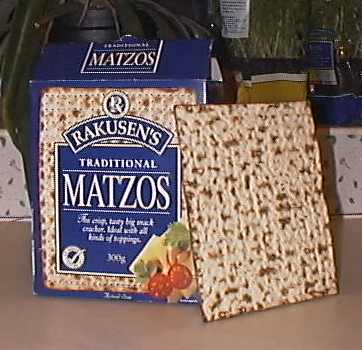Shalom! Passover is coming.
This year Passover, or Pesach as we Jews call it, falls during the Easter holiday so I am
doing my tips early in case anyone wants information in time for an assembly etc. before
the hols.
Pesach begins, this year, on 1
April, which coincides with Maundy Thursday, although like all Jewish festivals it
actually begins the previous night. In brief, Pesach is one of the 3 pilgrim festivals,
when the Biblical Israelites would travel to the temple in Jerusalem to celebrate a
harvest. At this first harvest of the year they also celebrated their ancestors' escape
from slavery in Egypt (See the book of Exodus).
Pesach has many traditions,
ceremonies and symbolisms attached to it. It is a time of family gathering, a time of
reaffirmation and celebration of the continuity of Jewish cultural and religious identity
and a time for children. At Pesach we stress the importance of teaching our history and
traditions to our children.
The central ceremony is
the Seder, a meal with many rituals which centres on the retelling of the story of the central
character, Moses. (I think it is interesting that the most important humans in
both Judaism and Christianity should be survivors/escapees of slaughters of the
innocents). The Last Supper was probably a seder. It would have been entirely consistent
with custom at the time for Jesus and his disciples to celebrate Pesach together.
The central symbolism
is Matzo, the unleavened bread which we are required to eat instead of normal bread,
together with a number of other special dietary restrictions that are peculiar to Pesach.
Matzo (pronounced mutza or motzah)
is unleavened bread. Pesach is sometimes known as Chag
Hamatzo (Festival of Unleavened Bread). If you have never eaten (or even seen)
matzo it comes as flat sheets very like large water biscuits, but not quite so hard.
Matzos (technically matzot) are usually square or round but there are no rules that I know
of that dictate the shape. On the other hand there are many rules connected with the
preparation of matzo. One of the elements of the Passover story is that the hurried exodus
of the Children of Israel from their homes in Egypt prevented them having time to let
their bread rise so they baked unleavened bread for the journey instead. We are bidden to
eat no leaven for the whole 8 days of the festival and hence there are many rules,
regulations and customs about disposing of Chametz (leaven) and about ensuring that
nothing we eat has had a chance to ferment. (Thus beer and whisky are forbidden during
Pesach - although, strangely, wine is not). Matzo must be made from grain to finished
matzot within a very short space of time (16 minutes if I remember correctly).

Matzo is quite delicious and you
can often find it in supermarkets (even in areas where there are no Jewish communities) in
amongst the crackers and cheese biscuits. It is good with butter or with spreads such as
peanut butter. My favourite way of having it is buttered, held under a cold tap for a
second or two, just to soften the bits the butter missed, and then sprinkled with a little
salt to taste. (Judith thinks I am mad to eat it that way).
One tradition (fairly modern, I
suspect) is the Matzo Ramble (a country walk with packed lunch of matzo sandwiches). Matzo
rambles are, of course, essentially a young persons' thing.
You can find out a little more
about matzo at: http://www.chabad.org/Pesach/matza.html which is a page on the Chabad-Lubavitch site. (The Lubavitch are a
Chassidic - ie ultra orthodox - group who are very active in working to spread the word
among Jews less orthodox than themselves. Their website is large and well produced and has
much of interest on it as long as you understand where they are coming from and who their
intended audience are.
A popular Pesach recipe is matzo
brei (bray) which is usually a breakfast dish containing matza and eggs. You can get the
recipe from: http://www.zip.com.au/~cs/recipes/html/matzo-brei.html
Matzo is an essential ingredient of
several Jewish foods. In particular crushed matzo (you can buy matzo meal) is used to coat
fish before frying. The fish is dipped in beaten egg and then in seasoned matzo meal. Much
better (in my view) than batter, and soaks up less oil so healthier.
Mike Freedman, 1999

